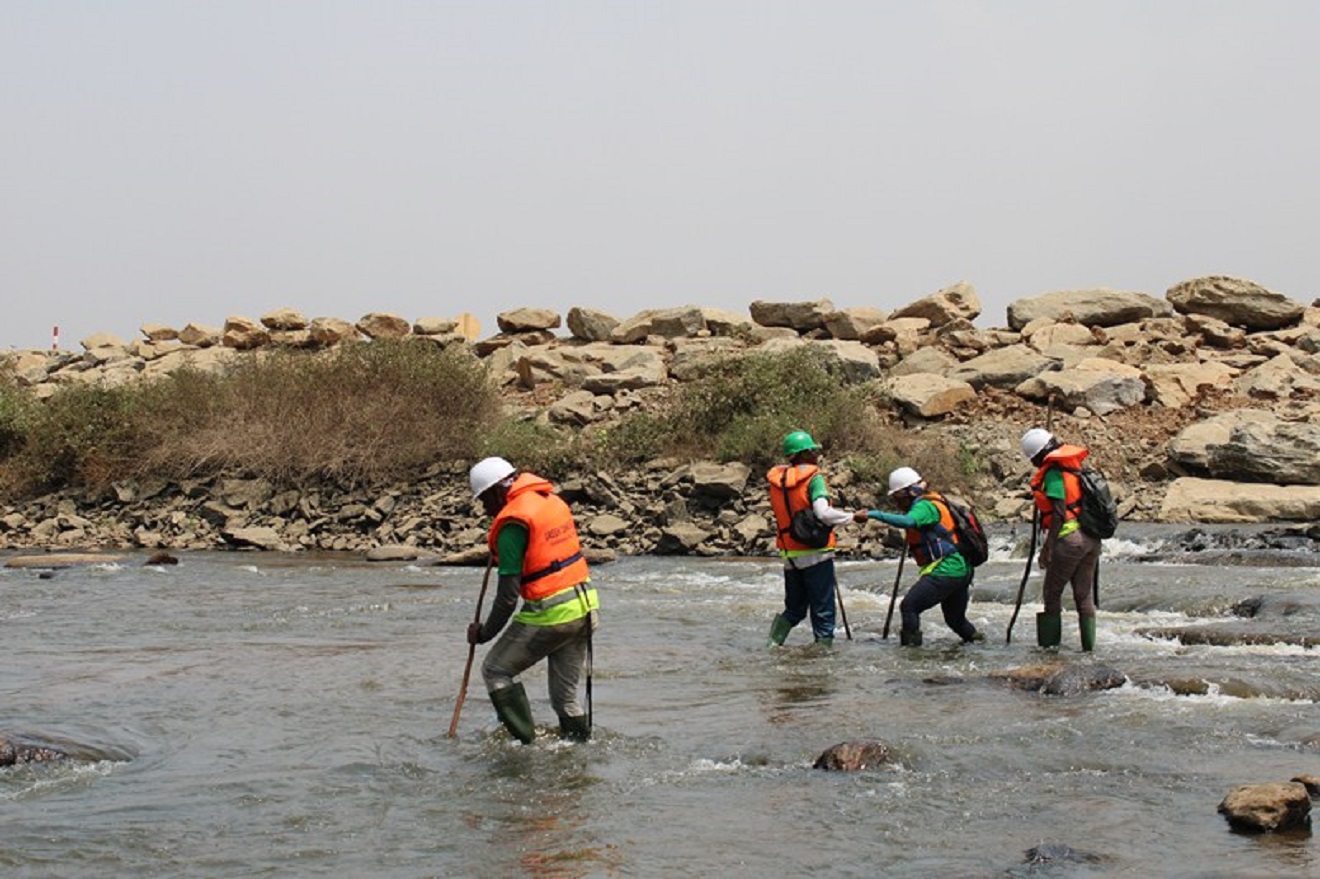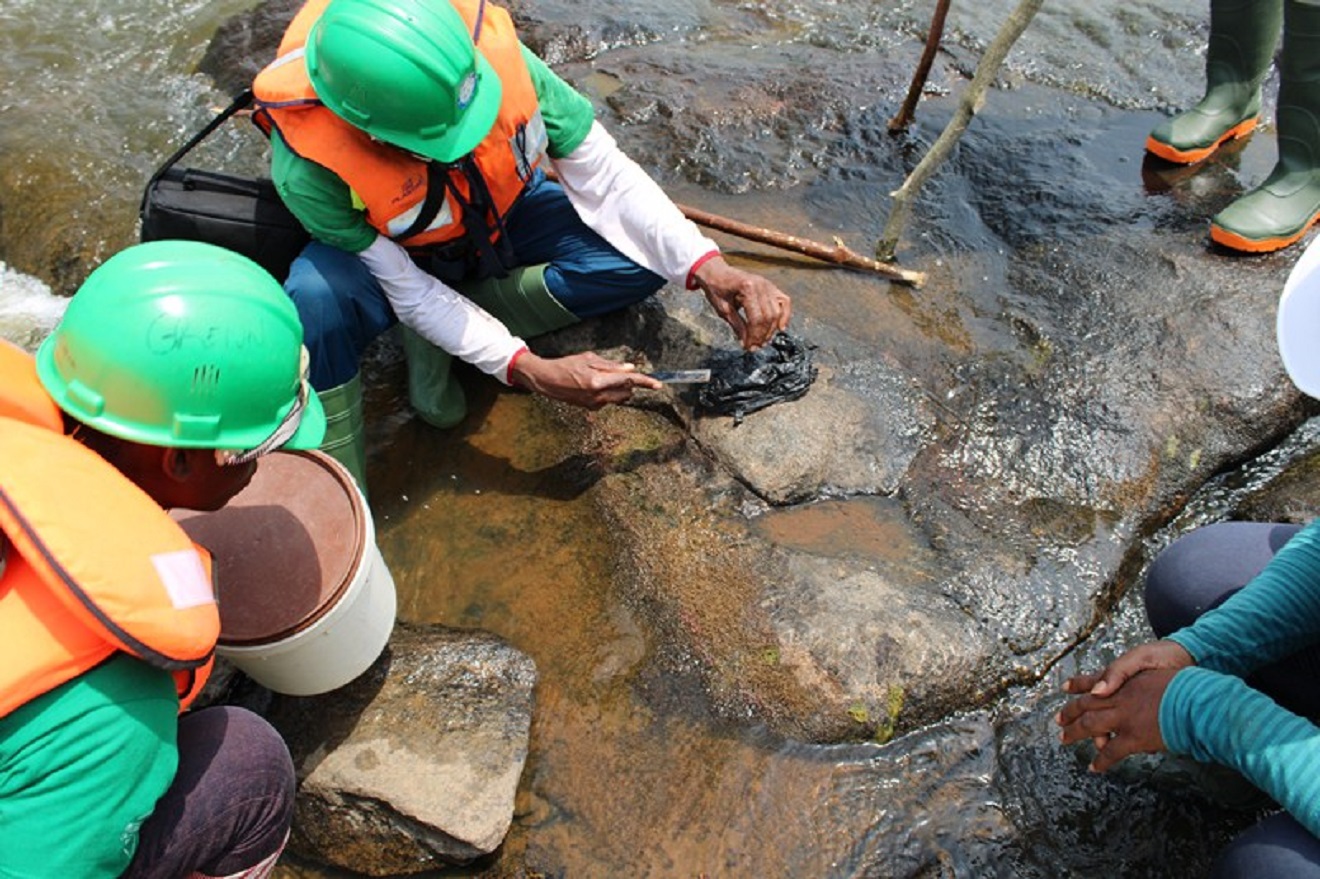


Country: Cameroon
Location: Batchenga (NDJI)
Project description:This note presents the specifications for a floristic study aimed at mapping the distribution of aquatic plant speciesLedermanniellaand other aquatic species at stake with the Lom Pangar low water support, to better understand the ecology of Ledermanniella and to carry out the first conservation trials of the species
s
Pays : Cameroun
Localisation : MAKAK (Makay et Dippipi)
Description of the project: The actions to be carried out were the following:
– Carry out field inventories to identify and locate the presence of protected aquatic plant species and favorable habitats. These inventories will be carried out following an adapted methodology

Country: Cameroon
Location: Batchenga (Nachtigal)
Project description: The Nachtigal up stream hydroelectric project (Middle Sanaga, Cameroon) is located on the up stream part of the Nachtigal falls and will create a reservoir of approximately 4.2 sq.km. Risks of impact have been identified on the two species of aquatic plants Ledermanniella. Among the accompanying measures proposed, the first is to improve and consolidate knowledge of the distribution of Ledermanniella in and especially outside the project area (on major tributaries); the second is to safeguard local genetic material. The objective of the service is to continue the surveys of the two Ledermanniella species, and to collect genetic material to be maintained in a seed bank.

Countries: Cameroon, Nigeria, Niger, Mali, Burkina Faso, Ivory Coast, Senegal, Equatorial Guinea, Republic of Guinea, Sierra Leone, Liberia, Mauritania, Guinea Bisau, Gambia, Togo.
Location :West Africa
Project description: The Consultant will draft assessments of a subset of the freshwater plants native to West Africa for The IUCN Red List of Threatened Species.
Country: Cameroon
Location: Nachtigal
Project description: Continue the survey of the two species of aquatic plants Ledermanniella (sanagaensis and thalloidea), and relocate stations of Marsdeniaabyssinica plants located in the construction area to less impacted locations.

Country: Republic of Guinea
Location :Lokoua
Project description: Within the framework of the Lokoua dam project in Guinea Conakry, an environmental and social impact study was carried out. The first results indicate the potential presence of endangered animal species in the vicinity of the site where the dam will be built. However, the methodological approach used does not make it possible to (i) determine with a sufficient level of confidence the level of impact of the project on biodiversity and (ii) conclude on the risk of destruction of critical habitat.
AFD therefore wishes to carry out an in-depth study of the ecological issues at stake in order to determine the project’s impacts on sensitive species in the vicinity of the infrastructure and reservoir implementation site.
This impact study must meet the following objectives
– Strengthen the initial state of habitats, flora and fauna in order to have the necessary data to allow an analysis of the stakes in accordance with the World Bank standards and good practices in the field;
– Complete the analysis of the impacts on biodiversity by studying in particular the risks related to (i) the cutting of terrestrial and aquatic corridors, (ii) the modification of the hydrological regime downstream of the dam, (iii) the creation of the reservoir, (iv) the increase in pressure on the natural environment following the flooding of arable land at the level of the reservoir and the installation of the construction site. This list is not exhaustive and may be adapted according to the bibliographical analysis and the results of the field surveys;
– Indicate whether the dam will result in the destruction of critical habitats;
– Define impact management measures according to the avoid, reduce and compensate approach.
The methodological approach chosen to achieve the above objectives will be based on good professional practices and World Bank and IFC standards, notably WB Environmental and Social Standard 6 and IFC Performance Standard 6.
Country: Republic of Guinea
Location: Lokoua
Project description: Second mission, see description above
Country: Cameroon
Location: Batchenga (NDJI)
Project description:The objective is the implementation of urgent measures of the mitigation strategy of priority aquatic species at risk declined in the new aquatic plants strategy.
Specific objectives:
1) Establish a reliable baseline for Ledermanniella species identified at the Nachtigal site and identification of other populations in the Sanaga River Basin;
2) Complete the information on the identification of the ecological needs of the species in order to identify the existing threats, the state of degradation and the measures to restore the populations ;
3) Elaboration of a protocol for the collection of seeds of Ledermanniella and Marsdeniaabyssinica and the setting up of an experimental nursery for Marsdeniaabyssinica;
4) Development of protocols for translocation trials.

Country: Cameroon
Location: Batchenga (NDJI), Mpem and Djim National Park (PNMpD)
Description du projet : L’objectif de la prestation est la mise en œuvre et le suivi des actions de saison sèche 2021-2022 préconisées dans la nouvelle stratégie actualisée des plantes aquatiques.
Objectifs spécifiques :
– Préparer avec le soutien de Kew Garden le calendrier d’intervention pour la saison sèche 2021-2022
– Collecte de spécimens/graines et expérimentation des méthodes de propagation et de translocation dans le Parc National du Mpem et Djim (PNMpD) (dispersion des graines, multiplication végétative, translocation avec substrat) ;
– Poursuivre dans le PNMpD, la recherche de L. linearifolia et L. sp. Nov, l’identification des sites propices à la translocation/compensation et l’identification des besoins écologiques des espèces de Ledermaniella ;
– Préparer et soumettre un rapport mensuel détaillé résumant toutes les activités du mois en cours.
The Green Connection Environmental Group will celebrate the International Day for Biological Diversity on June 1st, 2019 (a little deferred since the date dedicated is May 22nd). Green Connexion has joined hands with the National School of Water and Forests of Mbalmayo, to concelebrate the event to give it more brilliance.
The program includes guided tours, presentations and a field trip in the School’s experimental forest.